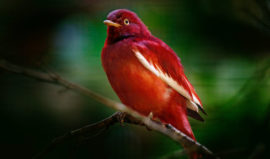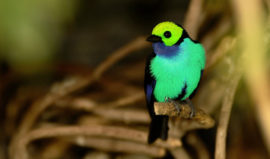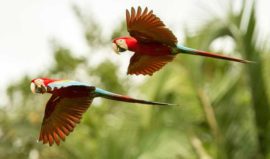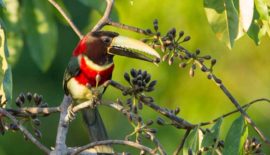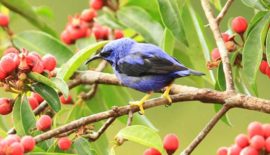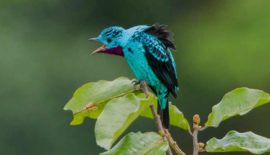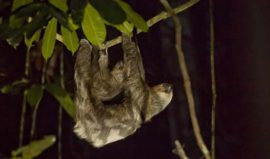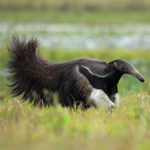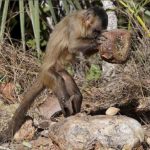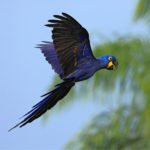03 Jan Brazil’s wildlife
Brazil’s Wildlife Hot Spots
Alex Burridge – MD South America Travel Centre

Most people immediately think of the Amazon when discussing the best places to view wildlife in Brazil. And whilst the Amazon rainforest and Amazon River are home to many wonderful species, the best wildlife viewing can be witnessed elsewhere. Here we take a look at the Pantanal, Southern dry Forests & Parnaiba Headwaters National Park.

# 1 PANTANAL

The Pantanal is a vast wetland area covering over 150,000 square kilometres.
It is thought to be home to more than 9,000 invertebrates, 1,000 species of birds, 480 reptiles and 300 mammals.
The more rare and difficult to see species include marsh deer, giant river otter, hyacinth macaw, crowned solitary eagle, maned wolf, bush dog, South American tapir and giant anteater. The more common species include capybara and Yacare caiman (a 1996 survey gave a total of 10 million). Other species found here include the anaconda and Southern tamandua.

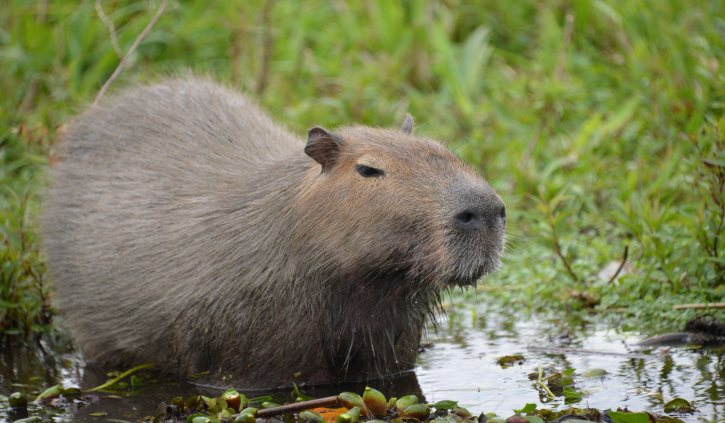
To increase your chances of seeing some of the more difficult to see species, it is best to stay at a number of small properties (Southwild Pantanal and Jaguar Flotel) who’ve developed specialist programmes, as well as the trust of certain species to massively broaden your chance of seeing them. With ample time at these properties you will have a great chance of seeing the elusive Jaguars.
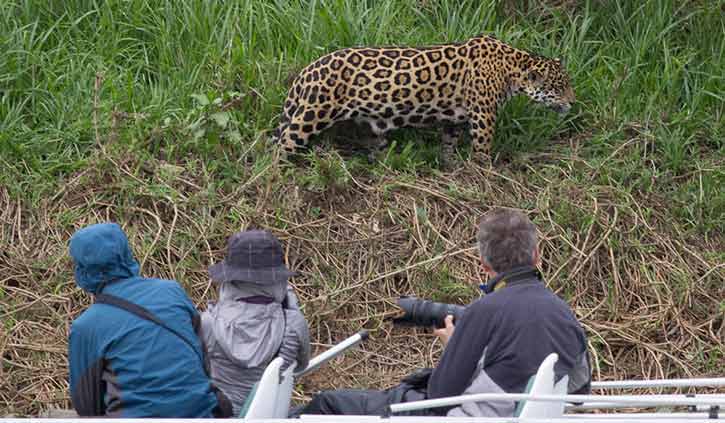
Getting to the Pantanal
Regular flights to Cuiaba from Rio de Janeiro or from Sao Paulo offer reasonably good access to the area. To view a sample itinerary click here
# 2 SOUTHERN PANTANAL & DRY FOREST REGION
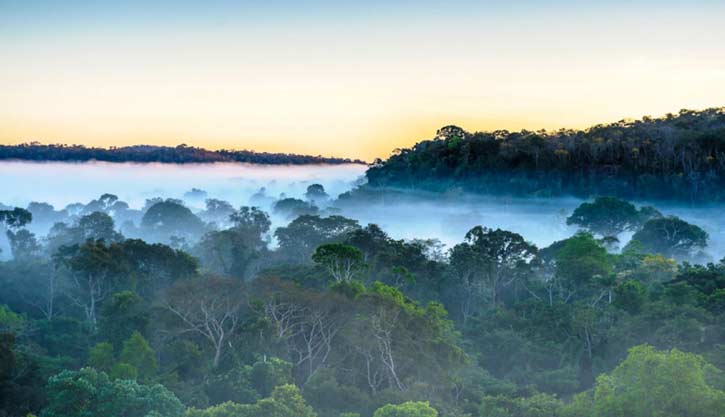
Bordering the Pantanal and the true Amazon Rainforest there are areas of ‘dry forest’.
These areas are also home to many species of birds (over 580 species have been recorded at Cristalino Lodge which is less than an hour from the small town of Alta Floresta).
The eco-lodge Cristalino is set within the first Private National Heritage Reserve in northern Mato Grosso. The Reserve is home to six different types of vegetation evergreen, deciduous, semi-deciduous, riparian (along the Reserve’s many rivers), campinara (with poor quality soils) and floodplain Forest. Six species of macaw- the scarlet, blue-and-yellow, chestnut-fronted, red-and-green, blue-winged and red-bellied are found here. This, in addition to many spectacularly colourful and wonderfully named birds; glittering-throated emerald, flame-crowned manakin, paradise tanager, Amazonian umbrellabird and possibly the winner in the name stakes the Pompadour cotinga. As for mammals there are three species of Anteater, two species of sloth and six armadillo species. Monkeys include; red howler, dusky titi, white-nosed bearded saki, silvery marmoset, brown capuchin and the white whiskered spider monkey.
With the capuchins, spider monkeys, sakis and howlers being sighted frequently.
Jaguars and pumas are very occasionally seen.
Images:
1. Pompadour cotinga, 2. paradise tanager, 3. red & green macaw, 4. red-necked aracari, 5. purple honey-creeper., 6. spangled cotinga
Images:
1. white-whiskered spider monkey, 2. southern tamandula, 3. brown-throated sloth
HARPY EAGLES
Another highlight of this dry forest region is the Harpy Eagle. Whilst the Andean condor has the largest wingspan the harpy eagle is the heaviest bird of prey, with an adult female weighing up to 9 kilograms (almost double that of the male).
Specialist operators offer excellent opportunities to visit ‘active’ Harpy Eagle nest sites. Rarely will you be able to view a harpy eagle soaring over the forest. Instead, the powerful harpy flies below the forest canopy and uses its significant talons to snatch up monkeys and sloths that can weigh over 7 kilograms. A harpy is capable of reaching rapid speeds of 80 kilometres per hour. Its short, broad wings are also capable of enabling the harpy to fly almost straight up, so it can attack prey from below as well as above.
Visiting a Harpy eagle nest takes time. First to get close to an ‘active nest’ (a nest that either has eggs or a chick), and then to wait for one of the adults to hopefully return. Allow 2-3 days in total.
Currently there are several active nests within half a day’s drive of Cuiaba or Alta Floresta in the south west of Brazil
Getting to Alta Floresta & Cristalino Lodge
There are daily flights from Cuiaba and/or Belo Horizonte (currently there are no direct flights from Rio).
Regular flights to Cuiaba from Rio de Janeiro or from Sao Paulo offer reasonably good access.

# 3 PARNAIBA HEADWATERS NATIONAL PARK
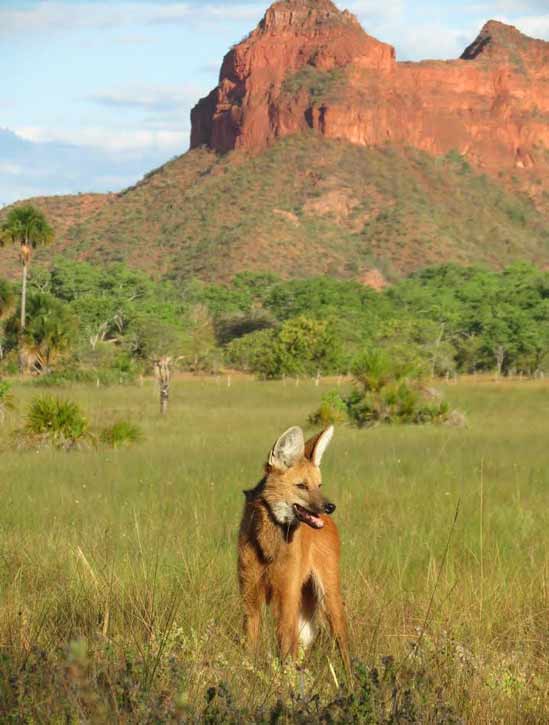
Brazil’s second largest park at 1.8 million hectares is home to four amazing and normally infrequently seen animals, maned wolf, bearded capuchins, giant anteaters and hyacinth macaws.
Red, green, blue and gold macaws are also seen here, as are howler monkeys, rheas, great potoos, jaguars and burrowing owls. Specialist wildlife operator Southwild have two simple, but comfortable, lodges from which to explore the region.
The chances of seeing maned wolf, giant anteater, hyacinth macaw and bearded capuchin (a tool (stone) using monkey) in Parnaiba are very high.
Getting to Paranaiba Headwaters National Park
It’s quite a trek to reach this remote park. It really is a journey for those who have a real passion for wildlife.
The park is located 800 kilometers to the north of Brasilia and 250kms from the nearest airport at Barreiras in Bahia State. The journey will require an overnight stay along the way and then a 4 hour drive from Barreiras to the park. I’m not trying to put you off – just set out the facts – to me the prize at the end of the journey makes the trip worthwhile.
Please call 1300 784 794 and speak with one of our specialist consultants who can combine one or all of the above into a tailor-made journey in Brazil. We can easily include time in Iguassu Falls, Paraty & Rio de Janeiro. For additional options for visiting the Amazon click here


